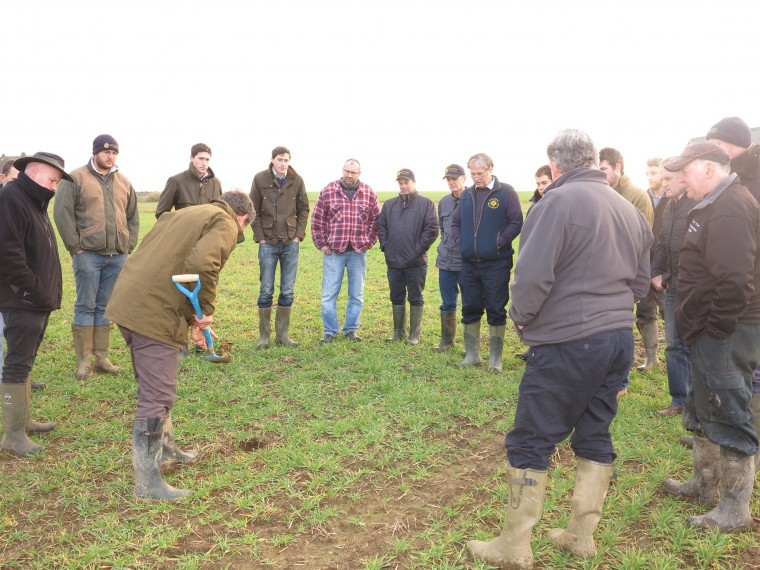With the festive season fast approaching, the company hosted local farming customers to lunch at Sellindge Social Club before South East technical support manager Rob Purvis led a tour around nearby fields to highlight the work Agrovista is doing to find the best way to keep the pervasive weed under control.
The trial fields at Somerfield Court, Sellindge, farmed by R Price and Sons, saw a good number of interested farmers attend each of two afternoon tours on consecutive days – and with the work clearly hinting at interesting results they agreed to revisit in the spring to check out the final trial outcomes.
The first field of winter wheat was home to a blackgrass herbicide trial featuring 63 different combinations of stacked pre-, peri- and post-emergence residuals and post-emergence contact chemistry.
The second trial is looking at the ability of hybrid barley to compete with blackgrass. As Rob explained: “The amount of hybrid barley grown is increasing, and there is no doubt that it is very vigorous in the spring, which could enable it to compete with black grass.
“It is, however, drilled at lower seed rates than conventional varieties, so this could have a negative impact on initial blackgrass numbers. The field has been drilled in strips of the hybrid variety Volume at 250 seeds per metre squared and the conventional variety Glacier at 350 seeds per metre squared.
“The field has had a good pre- and post-emergence residual herbicide program, but has left an average count of 25 blackgrass plants per square metre. Blackgrass plant counts will be carried out in January to compare the hybrid plots with the conventional, and head counts will be done in June.”
The third field showed the effects of applying Centurion Max at the three-leaf stage of blackgrass, together with a water conditioner to buffer pH, in a field of oil seed rape. “The treatment seems to have done a fair job, and it is due to have a follow up application of Astrokerb,” explained Rob.
“There is no known resistance to propyzamide, but its effectiveness depends greatly on the depth that the blackgrass germinates from. The best results come from applications to crops that have been direct drilled, but even this is not without problems. Rape can be a lazy rooter and can suffer in a wet spring if it cannot get its roots down.
“Direct drilling can also allow residual chemistry and sulfonylureas applied to the previous cereal crop to affect the following rape crop.”
Agrovista has drilled rape in the trial field alongside a companion plant, in this case berseem clover, which is sensitive to frost and easily controlled with aminopyralid and clopyralid, making it unlikely to become a weed problem in its own right.
“Its benefit in this situation is its extremely strong rooting capability, which can loosen the soil and let the rape roots penetrate,” said Rob. The field has been drilled with the Clearfield variety Veritas, which is resistant to the herbicide Imazamox, which is good at tackling weeds such as the hedge mustard prominent in the trial field.
With continuous winter cropping fuelling the problem with blackgrass, which thrives on wet heavy ground that does not lend itself to spring cropping, Agrovista has been looking at ways of reducing the blackgrass burden while still growing profitable crops, something the last two fields demonstrated.
One of the fields will be drilled with spring barley or spring wheat with as little disturbance of the soil surface as possible, which has been helped by drilling a cover crop of black oat and vetch in the autumn. This will be destroyed by a glyphosate application prior to drilling in the spring.
“The choice of cover crop is important. Varieties want to be late heading and need to be easily controlled if they get into other crops. We do not want a constituent of a cover crop becoming our next weed problem,” Rob explained.
The fifth field visited was sprayed off in November with the intention of drilling Belepi wheat there as soon as conditions allow. Belepi’s wide sowing window from October through to the end of March makes it a versatile variety. “It will be interesting to see how it performs when drilled in the winter rather than later in the spring,” Rob said.




